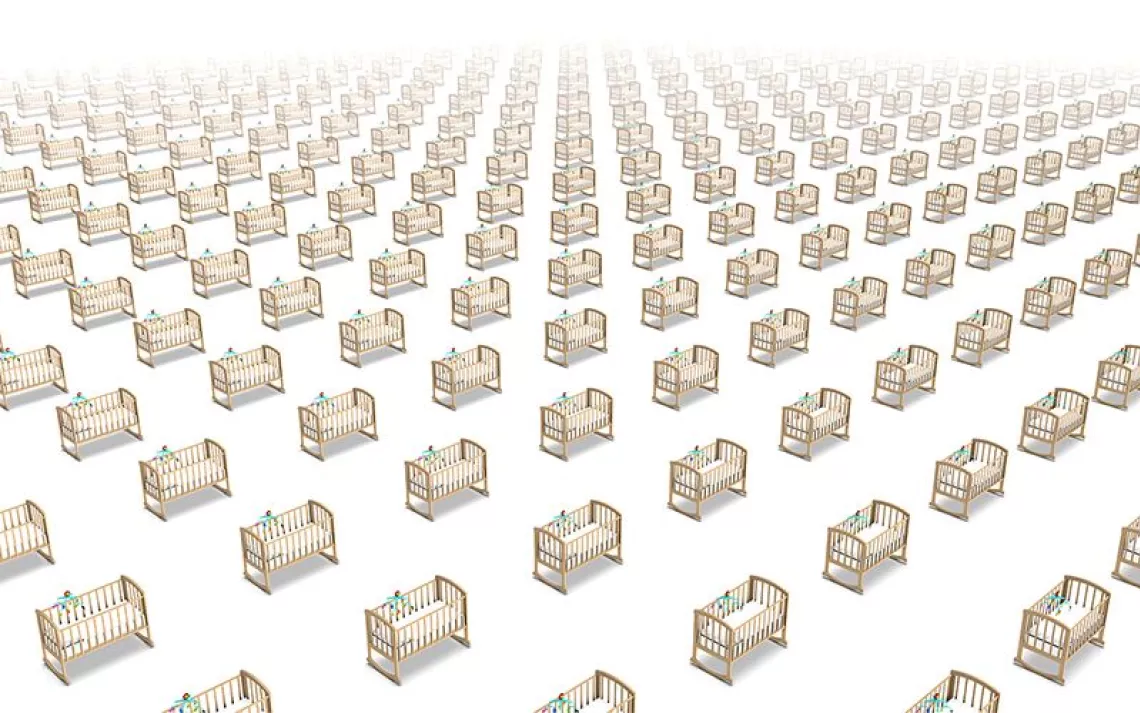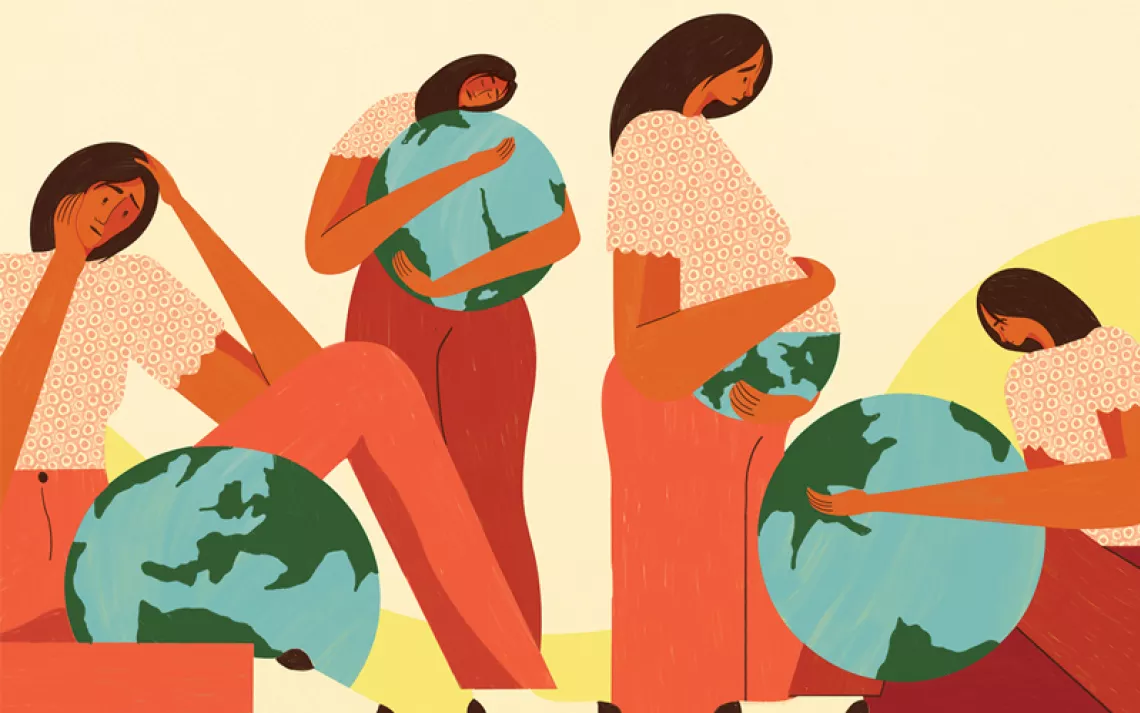The Growth Monster
Humans in their billions are overwhelming Earth’s ecosystems.
Photo courtesy of Joe Riis
My Montana bathroom is like most Americans’ bathrooms, complete with a rack stuffed full of magazines and a book or two. Above it is a page from poet Gary Snyder’s book of essays, The Practice of the Wild. The page ends with this passage:
Creatures who have traveled with us through the ages are now apparently doomed, as their habitat—and the old, old habitat of humans—falls before the slow-motion explosion of expanding world economies. If the lad or lass is among us who knows where the secret heart of this Growth Monster is hidden, let them please tell us where to shoot the arrow that will slow it down. And if the secret heart stays secret and our work is made no easier, I for one will keep working for wildness day by day.
Snyder’s words have been up there for many years. Months go by when I scarcely notice them any longer. But sooner or later, I read them and turn the words over in my mind yet again.
Since the long-ago days when all the Homo sapiens in the world numbered in the tens of thousands, people kept taking as much as they were able to from nature whenever and wherever they could. But toward the end of the 19th century, when the human population reached 1.5 billion, the consequences became too pervasive to ignore. Nations finally begin enacting rules to conserve living resources. For the first time ever in most places, game laws limited how many birds and big animals a person could kill in a given period. National forest reserves and wildlife refuges were established. A number of areas were also set aside as national parks, though the boundaries were often drawn more to encompass scenic features than biological components. Planners weren’t thinking in terms of ecology and ecosystems. It would be decades before most people even heard those words.
By the early 1970s, cracks were beginning to appear in the bedrock belief that modern industrial progress and a better quality of life were one and the same thing. The global population had more than doubled to 3.5 billion. Many cities and whole nations were trying to cope with serious overcrowding. Pollutants were toxifying people and other species at unacceptable levels.
Growing public concern over the degradation of our life-support system led to sweeping new environmental laws to stave off the worst of the threats. When it came to nature conservation, however, the emphasis was still on safeguarding a relatively narrow selection of creatures and settings—the ones that people found most compelling. Earlier campaigns had led to heartening last-minute rescues of iconic species such as America’s bison and trumpeter swans. Now the call was to do the same for a longer list of charismatic creatures in peril, from tigers and great whales to the delicate Karner blue butterfly (discovered, named, and beloved by the novelist Vladimir Nabokov). Save this species, save that wildland, keep running from crisis to crisis as they come to our attention. The idea was that this ongoing emergency room drama would carry our wild inheritance along with us into the future. Really? Even as we continue to proliferate and convert the globe’s remaining wildlands to meet our needs?
Not a chance.
By 2012, just four decades after reaching the 3.5 billion mark, the number of Homo sapiens had doubled once more, surpassing 7 billion. I mentioned this figure in the first chapter of Tracking Gobi Grizzlies and am not shy about repeating it. Very little of what I learned as a wildlife biology student about how to conserve nature was relevant to dealing with the impacts of that many people. The world’s coral reef systems are for the most part damaged, dying, or dead. Most of the commercially harvested fish species around the planet have already become scarce. In fact, most everything big and amazing and supported by a backbone, from river dolphins to snow leopards, four-foot-long Chinese giant salamanders to the great apes with which we share all but a few of our genes, is dwindling fast, if not on the verge of disappearing. To merely describe in neutral terms what is happening to life on Earth makes you sound like a doomsayer.
There have been tremendous die-offs on a global scale before, but not since human civilization began. So what exactly is one person out of billions supposed to do in a biosphere where a preponderance of natural landscapes, tens of thousands of species, and whole ecosystems are unraveling in real time? When normally cautious climatologists keep warning about the feedback loop of global warming, which continues to strengthen as more heat-trapping greenhouse gases in the atmosphere cause air and sea temperatures to rise? When all environments and the creatures that depend on them are suddenly at risk?
My answer is this: When you see nature falling to pieces, start trying to put some parts back together. Travel, hike, climb, get dirty, fall in love, have fun, rest up, make some money, call your mom, try to take care of yourself. Do all that. But for goodness sake, keep working to fix what we’ve broken. Recruit others to do the same. And refuse to stop. Even when you feel the ground tremble from the Growth Monster’s approaching footsteps, don’t quit. Especially when you feel the ground tremble from the Growth Monster’s footsteps, don’t quit.
Essay excerpted and adapted from Tracking Gobi Grizzlies: Surviving Beyond the Back of Beyond © 2017 by Douglas Chadwick. Used with permission of Patagonia.
 The Magazine of The Sierra Club
The Magazine of The Sierra Club







